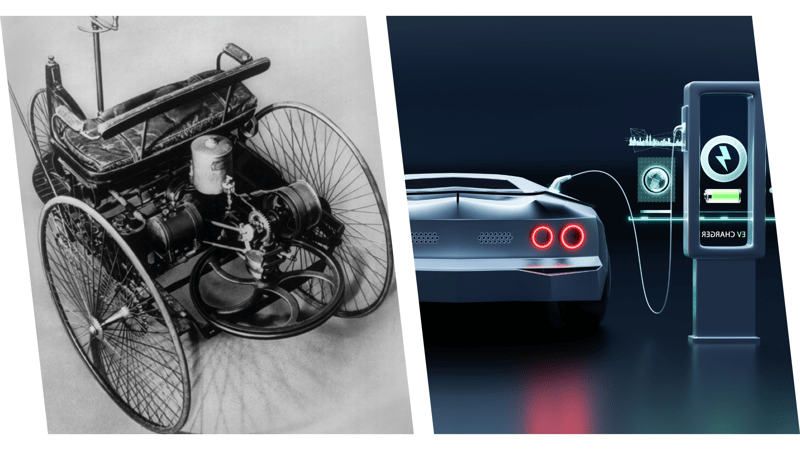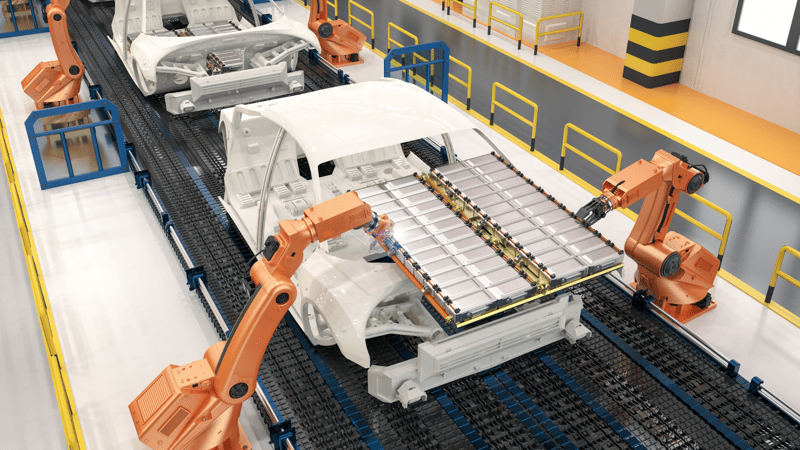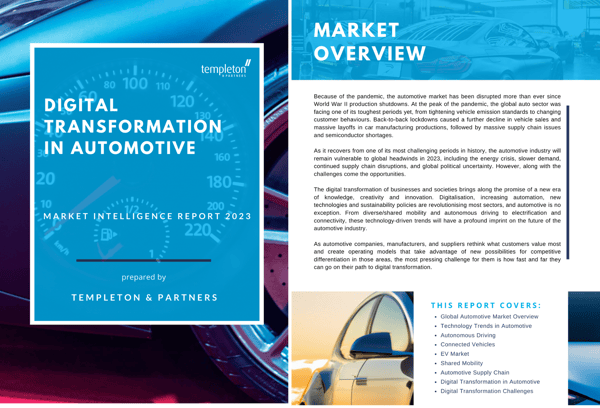The electric vehicle (EV) revolution is in full swing, with governments, automakers, and individuals around the world embracing this new technology to combat climate change, achieve zero emissions and reduce oil consumption. But are EVs truly the environmental superheroes we've been led to believe, or have we been caught in the web of 'greenwashing'?

The debate surrounding the sustainability of EVs rages on, with environmentalists championing them as the solution to fight climate change and achieve zero emissions, while sceptics argue that these electric “wonders” may not be as harmless as they seem.
On the one hand, EVs claim to produce zero tailpipe emissions, which can significantly improve local air quality and reduce greenhouse gas emissions. Additionally, they are becoming more affordable and accessible, making them a viable option for more consumers. On the other hand, the production of EVs requires significant energy and resources, and the fate of their batteries at the end of their usable life remains a challenge. Additionally, the electricity used to charge EVs may come from fossil fuel-powered power plants, which can offset some of the environmental benefits.
So, which side is right?
Join us as we delve deep into the world of electric mobility, separating fact from fiction and exploring the true sustainability of the EV revolution.
The Rise of EVs: From Past to Future

The history of electric vehicles is longer than most of us might think. The first electric vehicles predate petrol-powered cars, with experimental prototypes emerging in Hungary, the Netherlands, and the UK around the 1830s. The first practical EV is often considered to be American inventor William Morrison's vehicle from around 1890.
In the late 19th and early 20th centuries, electric cars enjoyed a brief period of popularity, but they were eventually overtaken by petrol-powered cars due to their longer range and lower cost. However, the 1973 Oil Crisis and growing climate concerns led to a renewed interest in electric vehicles.
In the late 20th century, modern electric vehicles emerged, starting with the Toyota Prius in 1997. Although the Prius was a hybrid model, meaning that it used both an electric motor and a petrol engine, it helped to pave the way for fully electric vehicles, such as the Nissan Leaf, which was launched in 2010.
Since then, the electric vehicle market has seen exponential growth. In 2022, sales exceeded 10 million units, and electric cars now represent one in seven vehicles sold globally. This growth is being driven by a number of factors, including government incentives, advances in battery technology, and a growing awareness of the environmental benefits of electric vehicles.
As the world seeks to transition to a more sustainable future, electric vehicles are expected to play an increasingly important role in the future. Governments around the world are banning the sale of internal combustion vehicles, and automakers are investing heavily in electric vehicle development. The future looks bright for electric mobility, and as we approach 2030, it's becoming even more evident that traditional petrol and diesel-fuelled engines are steering towards obsolescence, and the shift to fully electric cars seems inevitable.
But with the growing popularity of EVs, their overall impact on the environment is in the spotlight. While many are trying to predict whether our electric dreams will turn into an environmental nightmare, others are still questioning if our travel habits and preferences are even an issue that needs to be addressed.
Rethinking Travel: Is There a Real Need for Change?
The impact of climate change is hard to ignore – from the melting sea ice and the rising sea levels to extreme weather events such as hurricanes, droughts or intensive heat waves, it’s hard to deny the dimension of the problem. And there’s more to come if global temperatures rise by 2°C. In an attempt to minimise these consequences, scientists have been studying the main causes, pointing to greenhouse gases (GHG) like carbon dioxide, methane or nitrous oxide, and aerosols as culprits reshaping our world.
The Intergovernmental Panel on Climate Change (IPCC) underlines that transportation alone contributed to 14% of the 49 Gt CO2 eq released into the atmosphere in 2010. This figure, while significant in itself, doesn't even account for additional CO2 emissions stemming from vehicle manufacturing and road wear.
It is immediately clear from all this data that transport emissions account for a significant portion of global greenhouse gas emissions. In the United States, for instance, transport is responsible for a staggering 73% of direct emissions attributed to households. Even when considering indirect emissions, transport's share rises to 30%, overshadowing other contributors like energy consumed at home.
Among various modes of transportation, private cars stand out as major culprits, emitting four times more than air travel. Indeed, while air travel does have a considerable impact on our personal carbon footprint, aviation only slightly exceeds shipping in terms of emissions, and given that 80% of international trade in goods moves by sea, there are obvious implications for our consumption habits. As for car use, private vehicle emissions are rising steadily, both in absolute terms and per capita: the car fleet is growing, people are travelling more, the number of cars per household is increasing, and the number of occupants per car is falling. If current trends persist, transport emissions are projected to double by 2050, exacerbating the climate crisis.

In response to this looming threat, the rise of electric vehicles has emerged as a beacon of hope. With their zero-emission promise and advancements in technology, EVs have garnered significant attention. As of 2021, there were 16 million electric vehicles worldwide, marking a notable increase. However, they still constitute a mere 9% of global sales, primarily concentrated in regions like China, Europe, and North America.
But while electric vehicles seem to represent a significant stride toward a greener future, questions remain regarding their long-term sustainability. Is this shift to electric vehicles sufficient to cut fossil fuel emissions? What about the environmental impact of their production and the fate of their batteries post-usage? Do EVs truly have zero emissions?
In a nutshell, yes, a change in the way we travel is not just necessary – it's crucial. But are electric cars the answer?
Are EVs as Sustainable as We Believe? Examining the Full Lifecycle
Electric vehicles have gained significant popularity in recent years; for many accustomed to the routine of filling up gas tanks, they may seem like they're straight out of a sci-fi movie and, for others, as a symbol of individual action against climate change.
-
Understanding Electric Vehicles
While EVs function much like any typical automatic transmission car – they start up when you turn the key, accelerate when you press the pedal, and come to a stop when you hit the brakes, the game-changer lies in their motor design. Instead of relying on traditional internal combustion engines, electric vehicles are powered by batteries, which are periodically recharged using a charging station connected to an electricity power source. Most EVs utilise lithium-ion batteries, boasting a surprisingly simple design with only 20 moving parts, compared to the nearly 2,000 parts in a comparable internal combustion engine (ICE) vehicle.
Unlike traditional internal combustion engine (ICE) vehicles, EVs do not rely on fossil fuels and do not emit CO2 emissions during operation. This makes them an attractive option for those looking to reduce their carbon footprint.
How Do Electric Cars Work?
In an electric car, there's no need for petrol or diesel, and there are no gears to shift. When you press the accelerator, the motor draws power from the electric battery, propelling the vehicle forward. Interestingly, when you brake, the energy generated in the motor can be redirected back to the battery, enhancing its charge and maximising efficiency.
Here's where they stand out from traditional fossil-fuelled vehicles:
- They're Quieter: EVs operate with a hushed tone, eliminating the usual engine noise.
- Swift Acceleration: Without the need to shift gears, they offer rapid acceleration.
- Efficient Driving Style: Gentle braking and moderate speeds preserve the charge over time.
- Weather Consideration: Extreme temperatures, heat or cold, can affect the charge duration.
Types of Electric Cars
EVs come in different types, including fully electric vehicles (EVs), plug-in hybrids (PHEVs), self-charging hybrids (HEVs), and mild hybrids (MHEVs). Fully electric vehicles are powered solely by an electric motor and require plugging into a charging station to recharge. Plug-in hybrids, on the other hand, have both a combustion engine and an electric motor, which can be recharged by plugging into a charging station. Self-charging hybrids and mild hybrids also have both types of motors but differ in their ability to rely solely on the electric motor for propulsion.

-
The Environmental Impact of EVs: Operation and Charging
One of the primary advantages of EVs is that they produce fewer greenhouse gas emissions compared to traditional internal combustion engine vehicles. The European Energy Agency estimates that emissions from EVs can be between 17% and 30% lower compared to driving a petrol or diesel car. However, while it is true that EVs do not emit CO2 during operation, the source of electricity used to charge them plays a significant role in determining their overall environmental impact.
EVs charged with power from renewable energy sources, such as solar, wind, and hydroelectric, significantly reduce their carbon footprint. In Australia, for example, renewable electricity sources accounted for 35.9% of the grid in 2022, making EVs charged with renewable energy greener than their gasoline counterparts. However, in countries where a significant amount of electricity is still generated from fossil fuels, the emissions associated with charging an EV may be higher compared to driving an ICE car.
As the global energy mix shifts towards renewable sources, with many countries actively working towards decarbonising their electricity grids, the environmental benefits of EVs will probably become more pronounced. However, for now, it is still important to consider regional differences in electricity generation and the future projections for renewable energy adoption when comparing the environmental impact of EVs.
-
What About Manufacturing?
Another critical factor in electric car sustainability is their manufacturing practices. When it comes to the production of EVs, raw materials are a fundamental requirement, much like any other vehicle. However, the manufacturing process of electric vehicles emits more carbon emissions compared to traditional fossil fuel-powered counterparts. The reason lies in the unique materials required for the process. While conventional vehicles rely on common metals, electric vehicles utilise rare earth elements (REE) such as lithium, nickel, cobalt, and graphite, which demand carbon-intensive mining practices.
Another concern is that mining these REE materials comes with environmental trade-offs. For instance, about 60% of the world's cobalt reserves are located in the Democratic Republic of Congo (DRC), where lush rainforests with diverse biodiversity thrive. Mining in these regions can endanger the natural habitat and pose significant environmental risks.

The counterpoint to this is the alternative: many remaining oil reserves also exist in protected areas. While raw material extraction for both electric and fossil fuel-based vehicles presents challenges (often associated with contaminating waterways, damaging ecosystems in developing countries, and unethical child labour exploitation), many argue that the environmental impact of electric vehicles improves significantly over their lifetime in comparison to conventional cars. On average, electric vehicles break even in terms of their environmental impact after being driven between 17,500 and 21,300 miles, roughly 1.5 to 2 years of driving. Given that most vehicles cover around 200,000 miles during their lifespan, electric vehicles are considered significantly more eco-friendly in the long run.
This assessment is based on an essential environmental comparison technique known as Life Cycle Analysis. It involves measuring and comparing emissions over the entire lifespan of a product. For electric vehicles, this approach indicates that approximately 10-15 years of an EV's lifespan operate with a better carbon footprint than conventional cars, assuming clean energy charging and no changes in manufacturing or battery technology. However, the end-of-life disposal of batteries remains a pressing ecological challenge that needs to be addressed to ensure the overall sustainability of electric vehicles.
-
The Challenge of Battery Recycling
When it comes to battery recycling, the differences between conventional lead-acid batteries and lithium-ion batteries are stark. In the traditional car industry, a study by the International Council of Clean Transportation (ICCT) revealed that 99% of lead-acid batteries used in fossil fuel-powered cars are recycled in the US. However, the scenario changes significantly for lithium-ion batteries, the heart of electric vehicles.
Lithium-ion batteries have a complex chemical composition and contain small amounts of lithium, making them less economically appealing for recycling. This challenge is evident in the European Union, where, back in 2011, only 5% of lithium from these batteries was collected, while the rest was either incinerated or dumped in landfills. This ineffective recycling process contradicts the green image associated with electric cars.
Despite the passage of a decade, little improvement has been made. As of 2021, the recycling rate for lithium-ion batteries remains low. In Australia, for example, only 10% of these batteries were recycled. This indicates that the issue of recycling lithium-ion batteries persists, raising concerns about the environmental impact of electric vehicles and highlighting the need for advancements in battery recycling technologies.
The Environmental Paradox of EVs
While EVs are often hailed as a cleaner and more sustainable option, it’s important to understand and consider their entire lifecycle. On a positive note, electric vehicles actually reduce personal emissions during use. However, the process of extracting the materials needed for their production, the carbon footprint of battery materials, and the challenge of battery recycling and waste still raise significant environmental and social concerns.
Nevertheless, it's not all gloom and doom with EVs. In the past years, significant strides have been made to minimise their adverse impacts, showcasing ongoing efforts towards a more sustainable future.

-
Addressing The Challenge of Battery Waste
The end-of-life management of electric vehicle batteries is a crucial aspect of their sustainability. While EV batteries are designed to last for many years, eventually, they will reach the end of their lifespan and require proper disposal or recycling.
-
Battery Recycling
Currently, only a small percentage of lithium-ion batteries are recycled, with a significant portion ending up in landfills or being incinerated. However, existing battery recycling operations can recover a substantial percentage of materials contained within these batteries. The recycling process typically involves processing the batteries up to a certain level known as 'black mass,' which consists of electrode materials like metal oxides and graphite. This black mass can be exported for further processing to selectively extract and separate valuable components such as cobalt, nickel, and lithium. Europe and East Asia currently have the largest recycling capacity, primarily due to larger volumes of end-of-life batteries and favourable governmental policies.
-
Battery Waste Management – The Circular Economy Approach
As the market for EVs continues to grow, there is increasing interest in finding solutions to the battery waste issue. A circular economy approach is being adopted in the EV industry, aiming to maximise the reuse of materials throughout the entire lifecycle of vehicles and batteries. Many companies are already replacing degraded battery modules and repurposing them for various applications, such as energy storage, before finally recycling select materials for future EVs. By recycling and reusing outmoded EV car batteries, it is possible to extend their useful lifespan and offset the environmental impacts of battery manufacturing.
Efforts are also being made to establish stricter regulations for battery content in the European Union, mandating higher recyclability standards for domestically-made battery packs. This proactive approach is crucial to prevent electronic waste and ensure that EV batteries are responsibly repurposed and recycled.
-
Ethical Considerations in Material Sourcing
To address concerns about the ethical sourcing of battery materials, some car brands are taking steps to trace the origin of metals used in their batteries. By ensuring that ethical processes are maintained throughout the supply chain, these companies aim to minimise environmental damage and human rights issues associated with mining and processing rare metals.
Furthermore, advancements in battery technology have led to the emergence of alternative materials that can reduce the environmental footprint of EVs. Lithium-iron-phosphate (LFP) battery cathodes, for example, do not require nickel and cobalt materials, resulting in a lower manufacturing footprint compared to traditional lithium-ion batteries. Sodium-ion technology is also being explored as a more sustainable alternative.

So, How Green is Greener?
The journey toward sustainable transportation through electric vehicles (EVs) is undeniably a promising one, yet it is not without its challenges and complexities. While electric cars do not emit CO2 during their operation, their overall impact on the environment encompasses various stages, including manufacturing, energy production, and end-of-life disposal.
Manufacturing EVs involves energy-intensive and polluting mining activities to extract rare earth metals for batteries. Additionally, if these vehicles are powered by energy derived from fossil fuels, they indirectly contribute to CO2 emissions, even if not from their tailpipes but from distant power plants. Moreover, the recycling of lithium-ion batteries remains an expensive and ongoing process, with a low recycling rate in many regions.
Despite these hurdles, efforts are underway to make electric cars greener and more eco-friendly. Some countries, like Norway, Germany, and Costa Rica, are actively promoting electric vehicles through fiscal benefits and renewable energy initiatives. The push toward renewable energy sources for electricity generation, advancements in battery technology, and the establishment of efficient recycling systems are crucial steps in enhancing the sustainability of EVs.
Recognising the environmental and social challenges associated with EV production is fundamental for driving meaningful change and ensuring that the transition to electric mobility aligns with the goal of genuine sustainability. As consumers, policymakers, and manufacturers unite in their commitment to sustainability, the future of electric vehicles holds the promise of a more environmentally friendly and sustainable transportation system, marking a significant step toward a greener tomorrow.
Interested in learning more about the Automotive Market and the future of EVs?
Download our free Digital Transformation in Automotive Market Report 2023
About Us
Templeton holds a 27-year track record of recruiting thousands of IT professionals around the globe and a vast database filled with potential candidates that suit your needs. Find out more about our multi-award-winning recruitment services.






